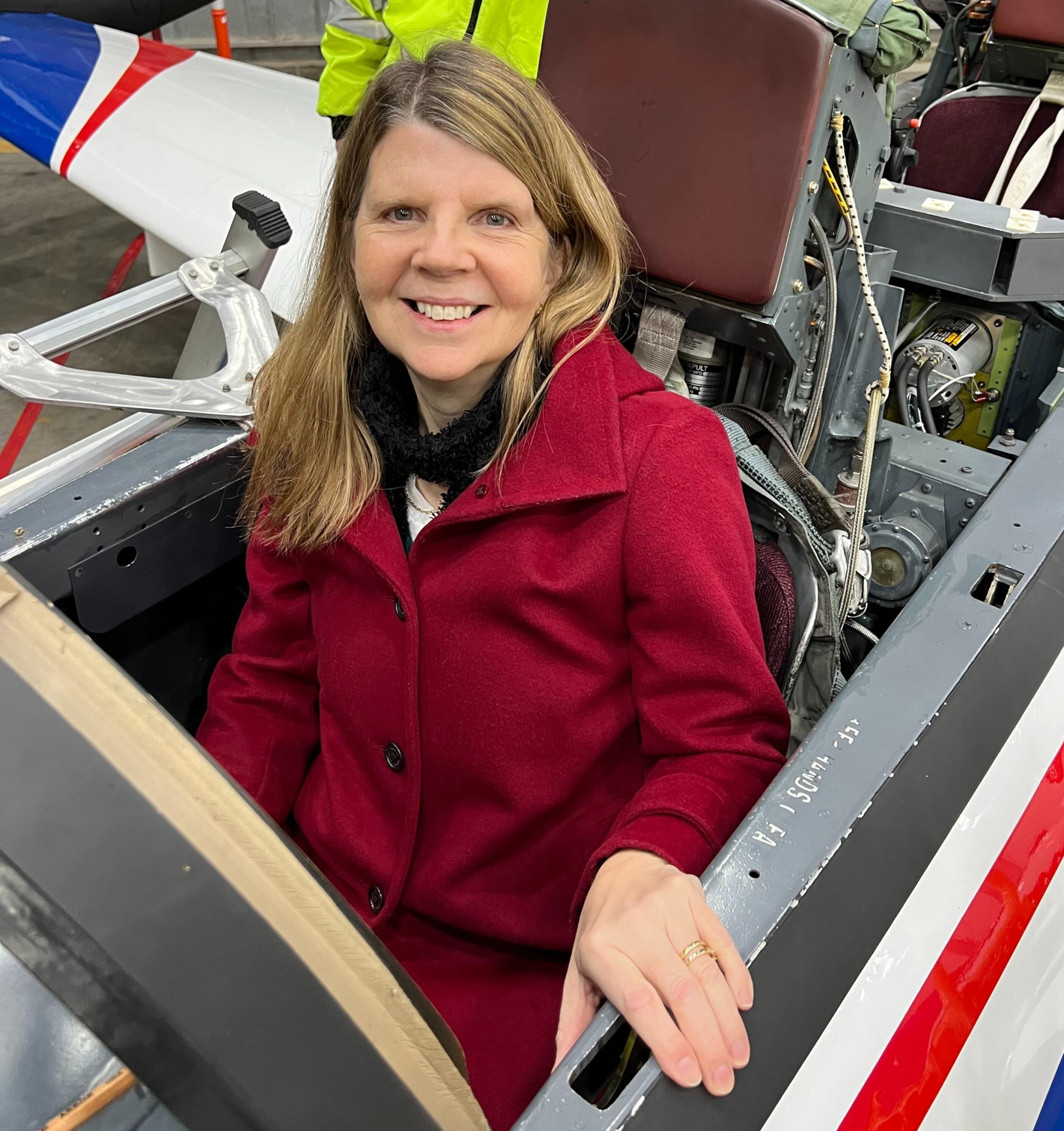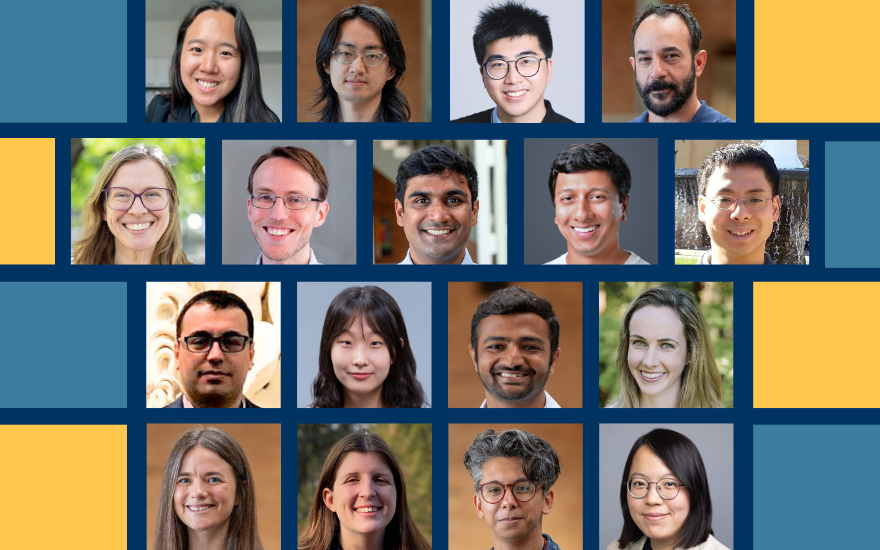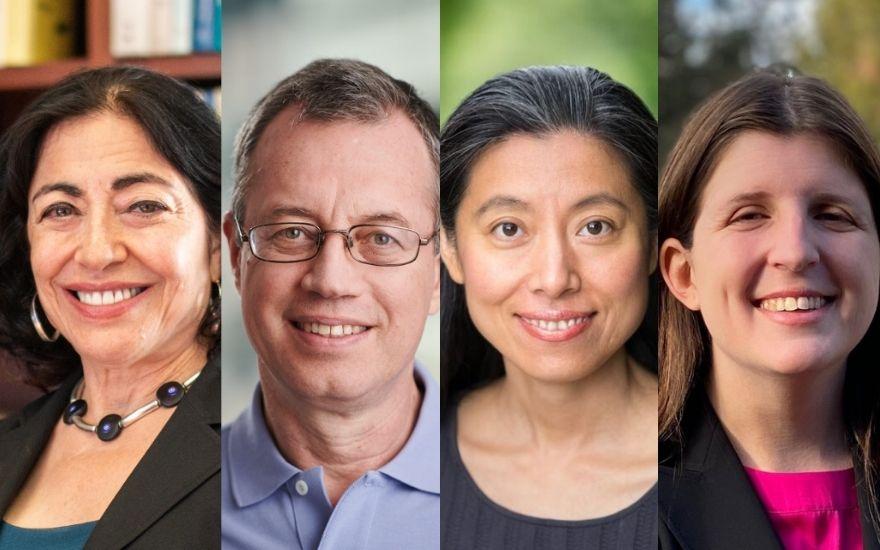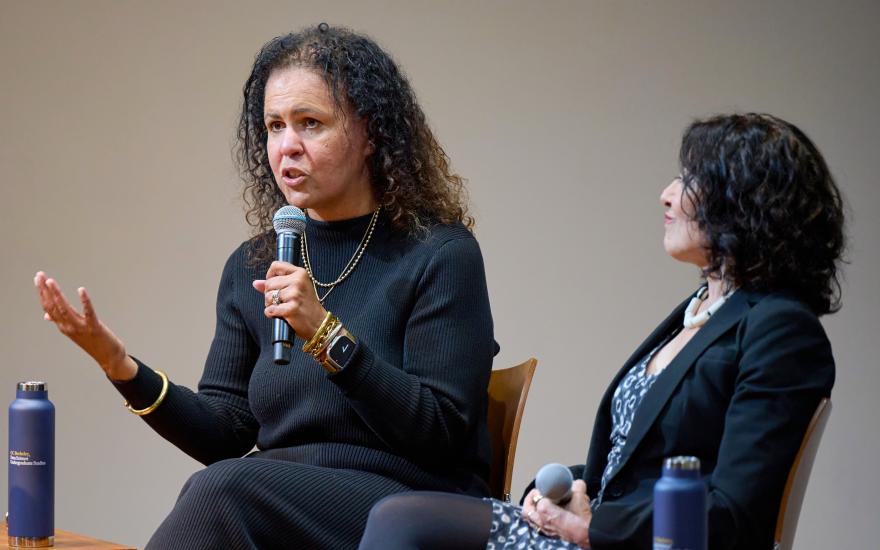
As a professor in the Department of Electrical Engineering and Computer Sciences (EECS) at UC Berkeley, Claire Tomlin has spent her career researching ways to enable autonomous systems to navigate safely. But over the past four years as department chair, she also focused on responsibly steering EECS during a time of significant change.
During her chair term, which ended in June, Tomlin helped dramatically expand the EECS faculty, established the department position under two colleges – a first for the university – and undertook an initiative to honor the department's history.
As she returned this summer to the full-time research work that first drew her to Berkeley, Tomlin reflected on the experience of building trust and closer relationships with her faculty members and colleagues.
Navigating uncharted territory
When Tomlin became EECS chair in 2021, the field of data science was growing rapidly. To meet the demands of student and faculty interest, Berkeley was developing a new college – the College of Computing, Data Science, and Society (CDSS) – which received UC Board of Regents approval in May 2023.
While some faculty worried – understandably so, Tomlin acknowledged – about the added administrative complexity, she saw the move as an opportunity to increase collaborations and resources. "There was no precedent for having a single department across two colleges," Tomlin said. "But it made a lot of sense in terms of the focus of EECS as a whole to be both in the College of Engineering and CDSS."
The Berkeley EECS department, with academic programs repeatedly ranked among the best in the nation and world, is now shared by CDSS and the College of Engineering.
Tomlin envisioned the EECS faculty tapping into CDSS' unique ability to take data science beyond technical processes and into real-world applications. "It's what the new college is about," Tomlin said.
The institutional change required careful deliberation and consensus amongst faculty. Tomlin credits the department's culture of regular communication with helping EECS through complex decisions about everything from promotions to funding allocation.
The process involved forming committees with representatives from different research areas, holding both small group and faculty-wide meetings, and ensuring all ideas were heard.
"I got better at it over the course of being chair," Tomlin said of managing diverse opinions.
A growing department
Tomlin didn't only focus on ensuring she listened to faculty, she also succeeded in adding more of them than ever before. Since EECS faculty support the three largest undergraduate major programs in terms of student enrollment on campus, the value of bringing in new faculty was clear. "We have a strong record of success and we're already teaching above our weight," she said.
By presenting this case to the university and casting a wide net for the best candidates researching theoretical and applied topics in computer science and electrical engineering, she was able to hire more than 20 new professors during her time as chair. "I feel like something we do well is hiring and nurturing young faculty," she said.
Her role as chair often looked towards the department’s future, but Tomlin was also thrilled to commemorate an important faculty member from its past. She helped commission a memorial statue honoring Joseph Thomas Gier, the first tenured Black professor in the University of California system in 1952 and an associate professor of electrical engineering at Berkeley. In 2023, the department erected a bronze memorial created by Oakland artist Dana King in the Blum Hall courtyard on campus.
"That was probably one of the most meaningful projects that I've been involved in," Tomlin said.
Research at the forefront of AI and control theory
The projects Tomlin led as chair were all-encompassing over the last four years. "It was hard to take a break," she said, but that doesn't mean she’s looking for one now that her term is over.
Computing fields, including rapid developments in artificial intelligence, are changing rapidly "so we have to revamp our teaching," she said. Tomlin is redesigning an undergraduate course on control theory to include AI so students receive the most up-to-date instruction.
After teaching the new course this fall, Tomlin plans to take a sabbatical to focus entirely on the AI and control theory work that has defined her career. Her research group has developed automated collision avoidance algorithms for aircraft and some of the first quadrotor aircraft systems for testing these algorithms.
Scientists can now use AI in aircraft and robotics to enable more advanced control. But unlike traditional systems that use precise mathematical models, Tomlin said, AI systems learn behaviors from data in ways that are difficult to understand. She is researching ways to combine AI with mathematical models to build more predictable safety measures for autonomous machines. "You have to have these safeguards in place," she said. "To me, that's just such an exciting area to work in."
As Tomlin’s focus shifts back to her fast-paced area of study, she acknowledges that the EECS department will also continue to grow and evolve. "I don't know exactly what it's going to look like in 10 years," she said, "but I feel like we're in a stable place." She knows she will value the lasting connections she made at the university during her appointment.
"The biggest thing is the relationships that you build as chair," said Tomlin, reflecting on her service. "That was the best part."






